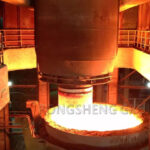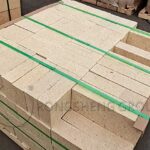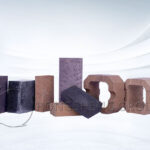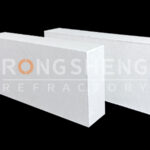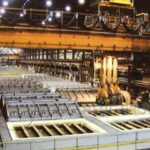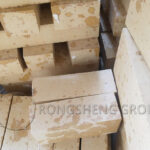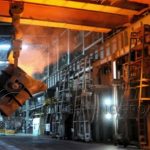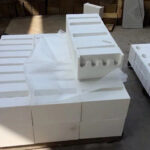The copper refining reverberatory furnace is a piece of equipment widely used in the copper smelting industry. It is mainly used to remove impurities in copper concentrate and improve the purity of copper. In copper refining reverberatory furnaces, the selection of refractory materials is crucial. Because it directly affects the service life, production efficiency, and product quality of the furnace. Application of magnesia refractory bricks in copper refining reverberatory furnace. Magnesia refractory bricks have become an ideal choice for copper-refining reverberatory furnaces due to their excellent properties.

Performance Characteristics of Magnesia Refractory Bricks
- High melting point. The main component of magnesia refractory bricks is magnesium oxide (MgO), whose melting point is as high as 2800°C, which is much higher than other refractory materials. Therefore it has good stability under high temperature conditions.
- Strong slag resistance. Magnesia refractory bricks have strong resistance to various slags and are not easily eroded and worn, which is beneficial to extend the service life of the furnace.
- Low thermal expansion coefficient. The thermal expansion coefficient of magnesia refractory bricks is low, which is beneficial to reducing the thermal stress of the furnace and reducing the risk of furnace rupture.
- Good thermal shock resistance. Magnesia refractory bricks have good thermal shock resistance and can maintain stable performance under rapid temperature changes and reduce furnace damage.
- Good wear resistance. Magnesia refractory bricks have good wear resistance and can withstand high-speed flowing materials and high pressure at high temperatures, which is beneficial to improving the production efficiency of the furnace.
Advantages of Magnesia Refractory Bricks in Copper Refining Reverberatory Furnace
- Increase the service life of your furnace. Because magnesia refractory bricks have the characteristics of a high melting point, strong slag resistance, and low thermal expansion coefficient, they have a long service life in copper refining reverberatory furnaces. Helps reduce furnace repair costs and replacement frequency.
- Improve production efficiency. Magnesia refractory bricks have good wear resistance and thermal shock resistance and can withstand high-speed flowing materials and high pressure at high temperatures. It is helpful to improve the production efficiency of the furnace and shorten the production cycle.
- Reduce energy consumption. Magnesia refractory bricks have good thermal conductivity. It is beneficial to improve the thermal efficiency of the furnace, reduce energy consumption and save production costs.
- Improve product quality. Magnesia refractory bricks have strong ability to remove impurities in copper concentrate. It is helpful to improve the purity of copper and improve the quality of products.
- Reduce environmental pollution. Magnesia refractory bricks are environmentally friendly, do not produce toxic and harmful substances, and are conducive to protecting the environment.
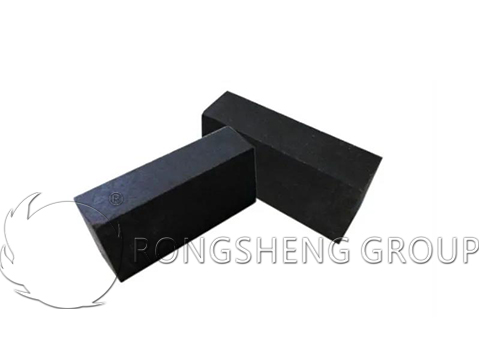
Application Prospects of Magnesia Refractory Bricks in Copper Refining Reverberatory Furnaces
As the copper smelting industry has increasingly higher requirements for environmental protection and energy saving, the application prospects of magnesia refractory bricks in copper refining reverberatory furnaces are very broad. First of all, magnesia refractory bricks have excellent performance and can meet various requirements of copper refining reverberatory furnaces. Secondly, the price of magnesia refractory bricks is relatively low, which can reduce production costs. Finally, the production process of magnesia refractory bricks has matured and is conducive to large-scale production and application.
In short, magnesia refractory bricks are an ideal choice for copper refining reverberatory furnaces due to their high melting point, strong slag resistance, low thermal expansion coefficient, good thermal shock resistance and wear resistance. By using magnesia refractory bricks, the service life, production efficiency and product quality of the furnace can be improved, energy consumption and environmental pollution can be reduced, and the sustainable development of the copper smelting industry can be contributed.
The main problems of the reverberatory furnace copper smelting method are the difficulty in recycling and serious environmental pollution. In the context of rising energy prices and increasingly stringent environmental protection laws, the limitations of the application of the reverberatory furnace copper smelting method have become increasingly obvious.
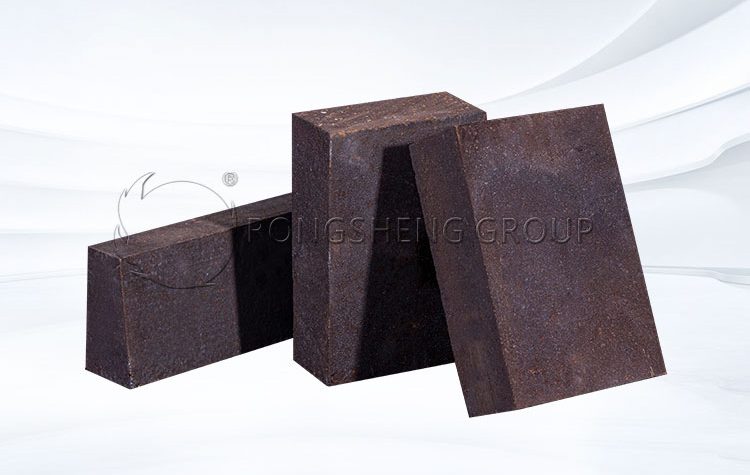
Application Parts of Magnesia Refractory Bricks in Copper Refining Reverberatory Furnace
The application parts of magnesia refractory bricks in copper refining reverberatory furnaces are mainly in the furnace masonry and working door openings.
- Stove top. In order to improve the service life of the furnace top, an ordinary hanging furnace top structure is adopted. Choose magnesia-alumina bricks with a thickness of 300mm. The furnace top is an important part of the reverberatory furnace and generally comes in two forms. One is a vault and the other is a suspended ceiling. The vaults are mostly made of silica bricks, which are built into a ring or divided into multiple sections. Suspended ceilings are mostly made of magnesia bricks, which have good resistance to high temperature, slag and chemical corrosion. Local maintenance is convenient and the furnace can be widened, which is beneficial to improving the production capacity of the furnace and extending the service life of the furnace top.
- Furnace wall. The inner wall of the furnace wall is made of magnesia bricks, with a thickness of 350mm. The outer wall is made of clay bricks with a thickness of 23mm. A 40mm thick cast iron guard plate is installed on the outside of the furnace wall. The furnace wall is also built on the furnace foundation. The inner layer of the furnace wall is made of magnesia refractory bricks, whose main function is to prevent the high-temperature erosion of the slag. The outer layer is built with ordinary refractory bricks, and the molten pool is thickened. Use magnesia bricks or chrome magnesia bricks to make 2 to 3 copper matte openings at the end of the side wall, and use them alternately. The slag discharge outlet is located on the end wall or side wall near the furnace tail, which is also made of magnesia bricks or chrome magnesia bricks. Some factories also install cooling water jackets on the outer walls of the furnace walls.
- Adopt brick pier overhead furnace bottom. The overhead height is 30mm. The thickness of each layer at the bottom of the furnace (from top to bottom) is as follows:
-
- The magnesia-alumina brick reverse arch layer is 380mm.
- The magnesia tamping layer is 60mm.
- Clay brick layer 465mm.
- Steel plate 15mm.
- Furnace door. There are two furnace doors. Consider using machinery to feed materials from the furnace chamber, and make the furnace door 1300mm wide and 800mm high.
- Slag removal port. There are two slag removal openings, both located on the side wall opposite to the furnace door. In order to facilitate slag removal, the lower edge of the slag removal port is 132m lower than the lower edge of the feeding port, and magnesia bricks are built around it.
- Place the copper port. The copper is placed in a hole type, and its position is located in the middle of the end wall at the end of the furnace. The hole size is 25mm, and the copper brick set is made of magnesia-alumina bricks.
RS Refractory Brick Manufacturer
RS Cheap Refractory Bricks Factory is a powerful manufacturer and seller of refractory bricks. The refractory products of RS manufacturers have been sold to more than 120 countries around the world, covering South Africa, Chile, Egypt, Colombia, Uzbekistan, Italy, Indonesia, Ukraine, Hungary, Spain, Kenya, Syria, Zambia, Oman, Venezuela, India, Peru, the United States, Ethiopia, etc. We specialize in providing high-quality refractory lining materials for copper metallurgical furnaces. Contact us for a free furnace lining solution. Free magnesia refractory brick samples, free quotation.


